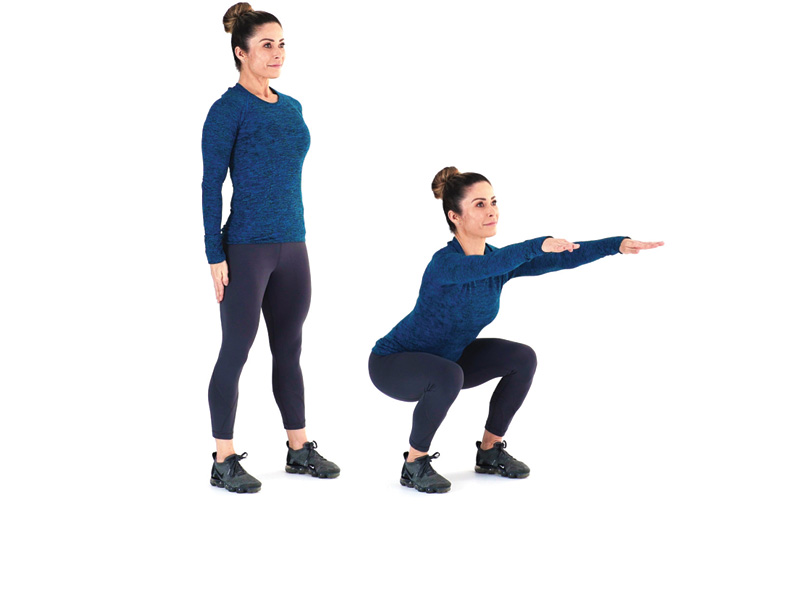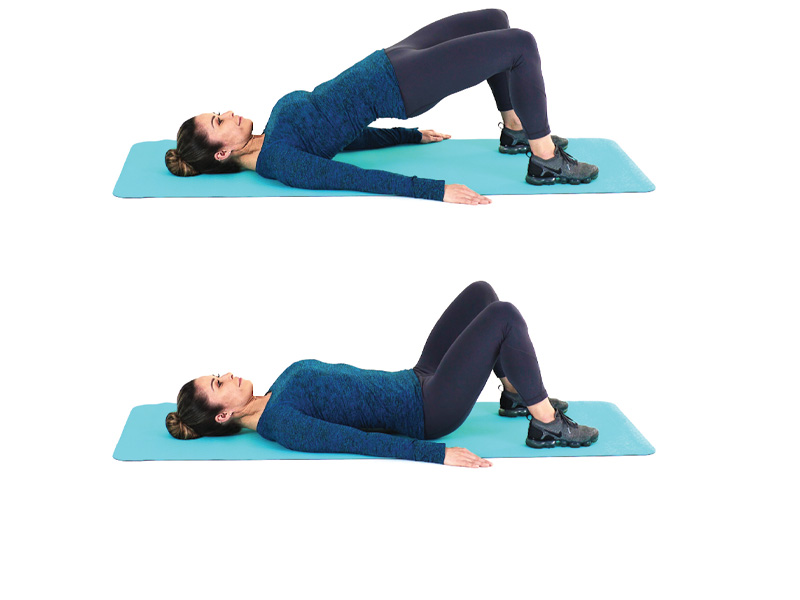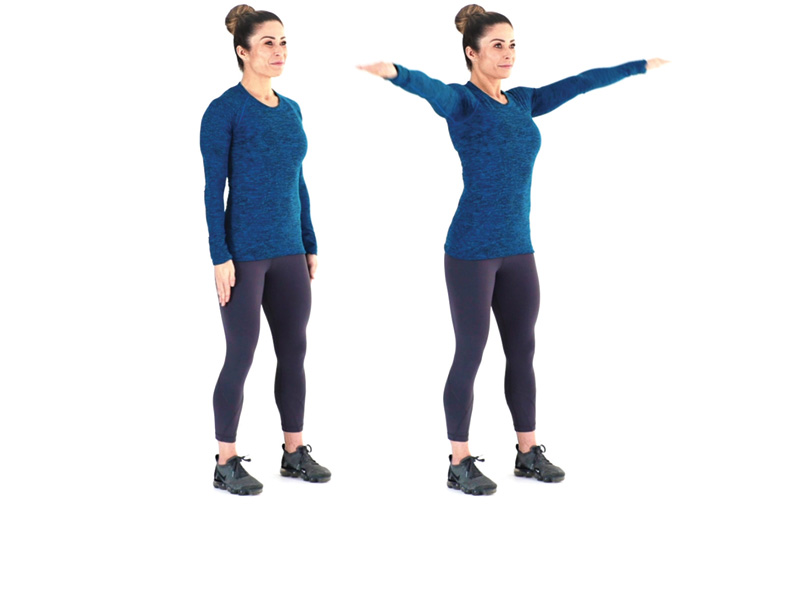Understanding the science of weight loss exercises
Every Spring, many Australians put the winter months behind them and embark on diet or exercise regimes to get in shape for summer. But few Australians know the best combination of diet and exercise for optimal weight loss and wellbeing. This guide includes practical, science-backed tips on the role exercise plays in weight management, and how combining higher protein diets with resistance workouts is the power duo for fat loss.
The role of resistance exercise workouts and fat loss
CSIRO research shows that adding resistance exercise with a kilojoule restricted diet results in favourable body composition outcomes and additional benefits over just dieting alone.
For example, in a group of overweight and obese adults with type 2 diabetes, a 16 week diet program resulted in 8.8kg of weight loss compared to 12kg when diet and exercise were combined. The exercise program in this study was 3 sessions of resistance training per week.
There seems to be an additive effect when a high protein diet plan is combined with resistance exercise. This combination results in greater weight loss, greater fat loss and greater reduction in waist circumference compared to a higher carbohydrate diet with exercise, or just diet alone.
In the CSIRO study referred to above, a higher protein diet combined with 3 resistance sessions a week resulted in the loss of 40% more fat mass than those following a higher carbohydrate diet with resistance exercise.
Learn more about the simple but efficient exercise plans on the CSIRO Total Wellbeing Diet.
Importance of combining diet and exercise
Diet and exercise are the two keys to achieving a negative energy balance and weight loss. In the short term, dieting, or kilojoule restriction, alone seems to have a greater, more consistent effect on weight loss then exercise alone.
But the benefits of resistance exercise in reducing body fat are important, and good weight loss results are achieved when resistance exercise is combined with a kilojoule restricted diet.
In the longer term, exercise is very important for weight loss maintenance.
Resistance exercise benefits
The benefits of resistance exercise can last well after you have finished your workout. Resistance exercise helps to retain or build muscle, and the preservation of lean muscle mass increases your metabolism. A higher metabolism is a good thing as you burn more energy all day. You even burn more kilojoules at rest, which makes weight loss easier.
The idea that you burn more kilojoules even after your workout has finished is called excess post-exercise oxygen consumption or oxygen debt. It is difficult to say how long this lasts for, as it depends on the duration and intensity of the exercise. The intensity of exercise seems to be particularly important in terms of increasing the afterburn effect of resistance exercise.
Join Now
What is resistance exercise?
Resistance exercise includes 'pushing' 'pulling' or 'lifting' activities in which the muscles work against some form of resistance. The resistance can be provided by bodyweight (e.g. push-ups), hand-held weights (e.g. dumbbells, resistance bands), or pushing or pulling using machines as resistance.
Resistance exercises include:
- Lifting weights at a gym or at home
- Bodyweight exercises such as push-ups, squats, or lunges
- Gymnastics or plyometric exercises
- Some styles of yoga or pilates
- Weight-bearing gym classes such as F45, CrossFit or Les Mills Body Pump
- Household or gardening type chores that involve lifting, carrying or digging
Do I need a gym for resistance exercise?
Moderate intensity exercise like brisk walking is easy to do as you can just put your shoes on and head out for a walk. Doing resistance exercise can also be easy and doesn’t need to always be done in the gym with heavy weights. The resistance can just be provided by your own bodyweight.
Depending on your fitness level and exercise experience, resistance exercise can be done with many different types of equipment:
- No equipment – just your bodyweight to do push-ups, lunges, squats, jump squats or step-ups.
- Resistance bands and dumbbells – these are inexpensive and can make resistance exercises a little more difficult – in a good way!
- Household items can even be used in place of dumbbells. For example, shoulder presses with bags of rice, or squats holding a bag of potatoes.
- Gyms provide access to more advanced equipment. So, a work out with machines or heavier free weights is great if you have a gym membership.
Resistance exercise has many benefits
- Regular resistance exercise is particularly beneficial to help strengthen your muscles as well as:
- Manage blood pressure, blood sugar and cholesterol levels
- Prevent and control heart disease and type 2 diabetes
- Improve your posture, balance and mobility
- Reduce the risk of falls or injury
- Make everyday tasks easier to do
Moderate exercise
Activities that take some effort, but you can still talk while doing them.
- brisk walking
- swimming
- dancing
- social tennis
- golf
- household chores like raking leaves
Vigorous exercise
Activities that require more effort and make you breathe harder and faster.
- running
- fast cycling
- aerobics
- high intensity interval training
- organised sports
Resistance exercise
Activities that help to strengthen your muscles.
- exercises such as push-ups, squats or lunges
- weights in a gym
- household chores like digging, lifting or carrying
Who needs resistance exercise most?
Men vs women
Gaining body strength is important for everyone. That is why the Australian Physical Activity Guidelines for resistance exercise are the same for men and women – at least twice per week.
The benefits of resistance exercise include gains in strength but this doesn’t have to come with ‘bulk’ as many people might think. Resistance exercise can develop muscle definition and reduce your waist circumference, which in itself is a risk factor for disease.
Why women need resistance exercise
There is evidence that the results of dieting for weight loss, with or without exercise, are different for men and women. For example, men often start at a heavier weight and therefore lose more weight when dieting compared to women. Women tend to lose more off their hip circumference but also lose more lean muscle (or fat free mass). So, it might be particularly important for women to do resistance exercise during weight loss to maintain this lean muscle mass and strength.
Interestingly in the CSIRO Total Wellbeing Diet members we surveyed, women were more likely to report lifting weight or toning exercise as being important for weight loss – whereas men thought walking and jogging were the two most important types of exercise for weight loss.
Why you need to start resistance training now
You are never too old to start exercising. Resistance exercise is about gaining body strength, and this is important at any age. Resistance exercise has many benefits including increasing or maintaining muscle strength as you get older (muscle loss associated with age is called sarcopenia) and preserving bone strength (reducing your risk of osteoporosis).
Maintaining strength, balance and mobility improves your functional ability to do daily activities. Being fit and healthy helps you get the most out of life.
Should overweight people lift weights?
Some people find exercise hard, especially if they are overweight or obese. But with weight loss exercise does become easier.
The overweight and obese members we surveyed were more resistant to resistance exercise than those of a healthy weight but importantly they were equally aware of the benefits of doing muscle strengthening exercises for weight loss.
The benefits of resistance exercise are especially important for overweight or obese individuals. For example, insulin resistance is more common in overweight individuals and is a risk factor for type 2 diabetes and cardiovascular disease. Doing regular resistance exercise results in improvements in
blood sugar control reducing this risk.
Resistance exercise is also particularly beneficial for reducing abdominal fat which will lower the risk for heart disease. As opposed to rhythmic, weight bearing aerobic exercise like jogging, resistance exercise may also be easier for overweight or obese people as it places less stress on the joints.
How to do resistance exercise at home
The following resistance workout is from the CSIRO Total Wellbeing Diet which includes 3 resistance workouts a week. For maximum benefit, our workouts target the whole body, require no equipment and can be performed at home in 15-20 minutes.




